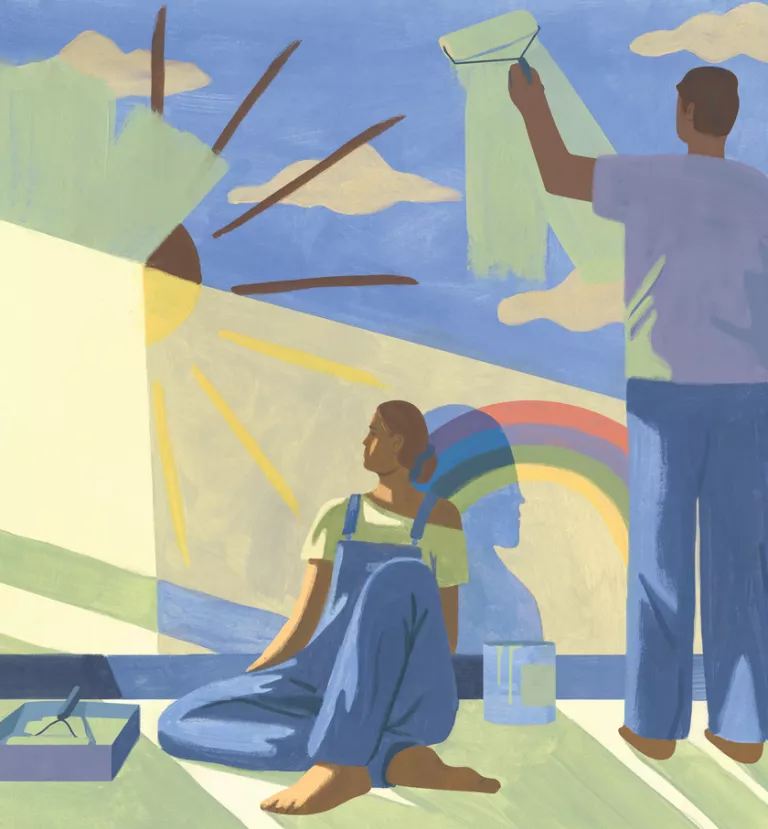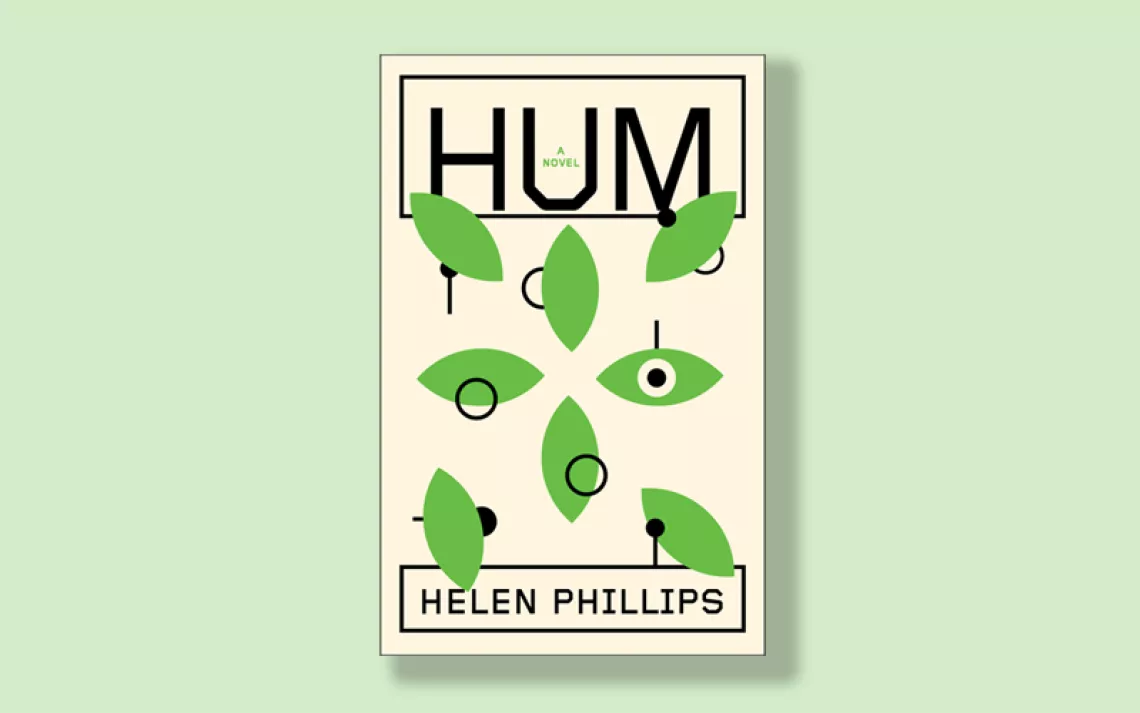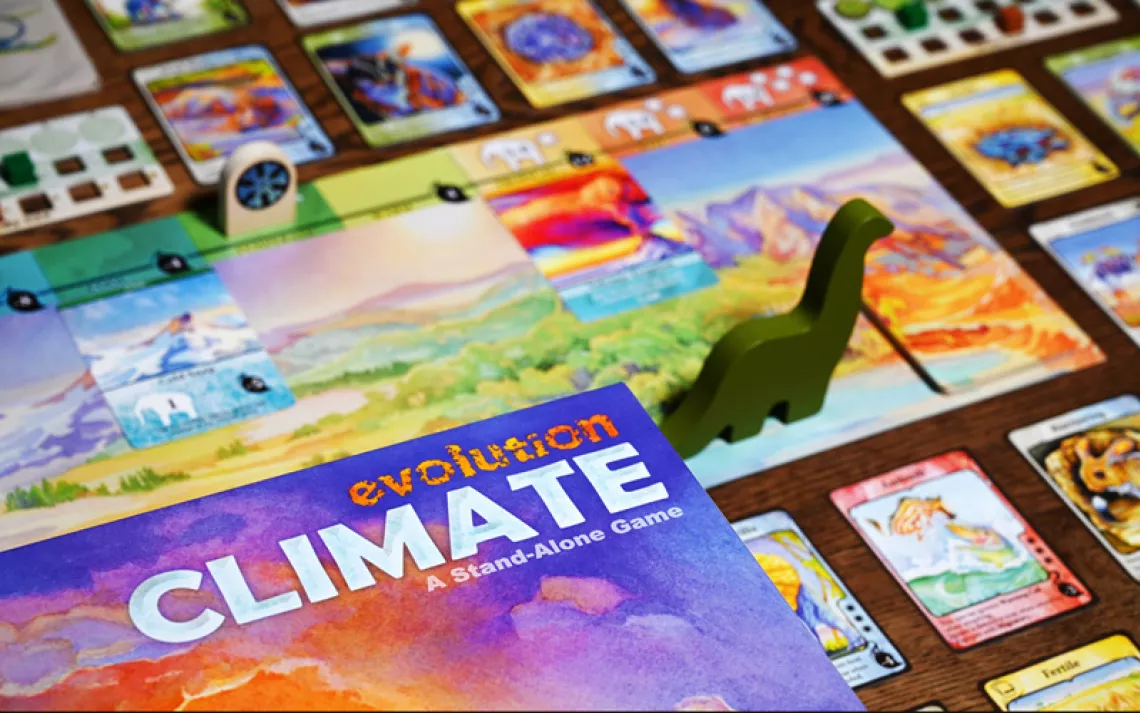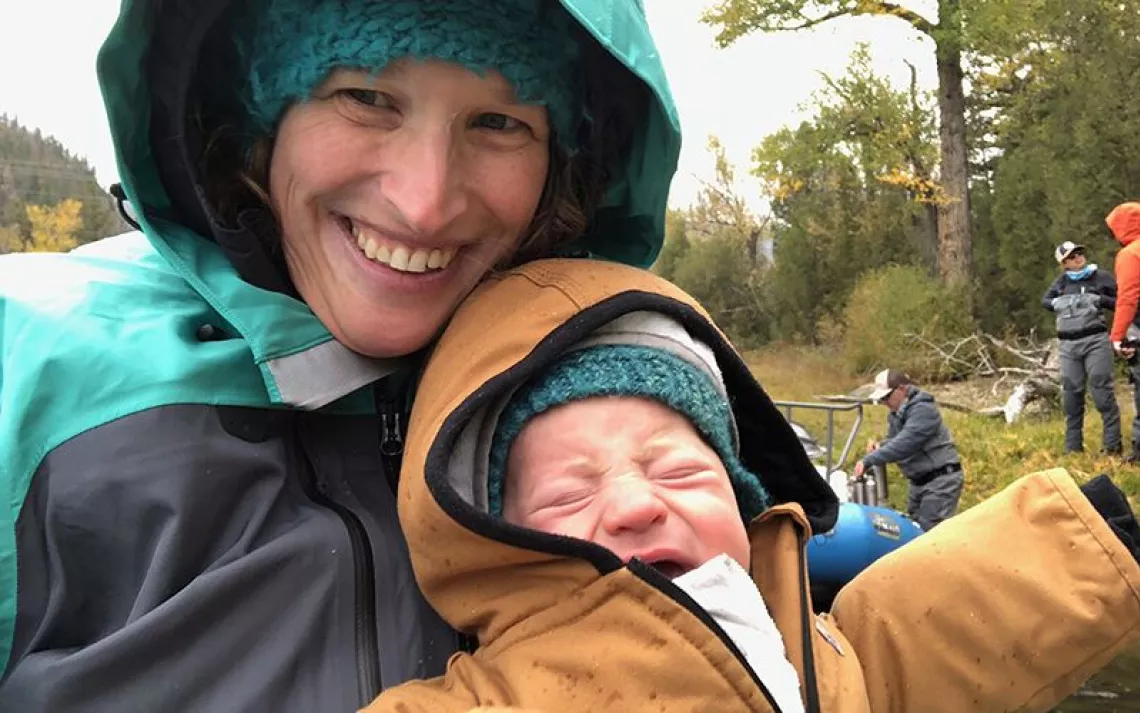As Climate Warms, More Are Asking: Should I Have Kids?
Deciding whether to have children is getting even more complicated

Illustration By Holly Stapleton
Few of us sit comfortably in indecision. Weighing options, balancing trade-offs, and fretting over the best outcome can be exhausting. When children are involved, the stakes are especially high. Whether to start a family is one of the most momentous and life-changing decisions a person can make. Factor in climate change and it gets really complicated—the perils we face from ongoing fossil fuel use and rising temperatures have made family-making even more fraught. No parent wants their child to suffer.
Public displays of reproductive wondering—of pondering “the kid question,” as Jade Sasser calls it in her book Climate Anxiety and the Kid Question—fill novels, memoirs, podcasts, and newspaper headlines today. In Meghan Elizabeth Kallman and Josephine Ferorelli’s book, The Conceivable Future, the kid question boils down to these considerations: “What harm will the world do to my baby?” and “What harm will my baby do to the world?” The Conceivable Future arose from a community group Kallman and Ferorelli founded for people who are contemplating having kids and want to share their feelings while also supporting climate action.
Men undoubtedly face reproductive decisions too. Yet when it comes to wondering in writing and pop culture more broadly, women dominate the space (notable exceptions include Daniel Sherrell and Tom Whyman, who wrote memoirs). The new chatter about procreation doesn’t only highlight how climate change affects women specifically; it also draws out the racial dimensions of the crisis. Sasser’s book unflinchingly examines the existential threat the crisis poses to poor, Black, and Latino people in the United States, and how gnawing anxiety and anger inflect young people’s reproductive wondering. While many of the people of color she interviews want to form families, “their own existing social vulnerabilities, as well as how they might be compounded by climate emotions and direct climate impacts, gives them pause. . . . This anxiety is layered on top of . . . fears and concerns that future children will endure discrimination, injustice, and an increasingly unlivable planet.”
Climate crisis aside, the question of whether to have children is not unique to our generation. At times, rarely, women have had the ability to answer the kid question freely—to choose. Womanhood has never been reducible to motherhood; across cultures and centuries, women have controlled their fertility. They have delayed marriage to limit family size, used herbs to induce miscarriage, entered religious orders requiring abstinence, and created art and businesses in lieu of parenting. The pill and the IUD revolutionized medical control over fertility, and the 1965 Griswold v. Connecticut and 1973 Roe v. Wade Supreme Court decisions legally protected the rights to contraception and abortion.
But throughout history, women have been stripped of choice more often than not. Slaveholders violently used enslaved Black women’s bodies as tools for reproducing the plantation labor force and making a profit. As eugenic ideology spread in the United States in the early 1900s, poor, Black, and Indigenous women, and those deemed unfit to reproduce, received contraception and sterilization without their consent—as did those in Puerto Rico and in countries like Bangladesh that were subject to global development programs later in the century. Supporters of population control often drove these development efforts and sometimes used environmental protection as a veil for nativist positions. Even the Sierra Club for a time played a role in that history when, beginning in the late 1960s, its leaders linked environmental ills to overpopulation, called for immigration restrictions, and published Paul Ehrlich’s hugely influential but flawed The Population Bomb. More recently, the 2022 Dobbs v. Jackson decision, erasing Roe v. Wade, reminded us that the tools for family decision-making are not secure.
These structural issues render the question of whether to procreate amid climate change an “impossible” one for Kallman and Ferorelli in The Conceivable Future. While the answer feels highly personal and shaped by one’s biology, relationships, finances, and preferences, it’s in fact about “the actual forces that are causing everybody to struggle,” forces like carbon-intensive economies and sexist and racist institutions.
As a warming planet ignites fear in prospective parents, the kid question rings out more and more in our culture. Social media and pundits buzz when Miley Cyrus and Alexandria Ocasio-Cortez suggest that the climate crisis might be a reason to stay child-free. On Expectant and The Gray Area, podcasters examine fertility under the cloud of climate change. Emma Gannon, in her novel Olive, and Donna Freitas, in The Nine Lives of Rose Napolitano, bring environmental worry into their plots of reproductive wondering.
These narratives show how uncomfortable indecision can be, even when it’s shared by many. Gina Rushton opens her book of investigation and reflection, The Parenthood Dilemma, by “reckoning with the cost of ambivalence, the calculus involved when your wish for something, anything . . . comes only in flashes.” Lots of things contribute to uncertainty—climate, geopolitics, racism, sexism, the economy, health care, affordable housing—but shouldn’t she just know what she wants? Early in Elizabeth Rush’s The Quickening, a fertility memoir–cum–scientific travelogue, she characterizes her indecision as “disorienting” and likens it to the contradiction of wanting to see an Antarctic glacier calve while knowing it bespeaks climate collapse.
Rushton explores the work of cognitive scientist Laurie Ann Paul to help understand her indecision. Paul explains that rational approaches to decision-making fly out the window when kids are at stake. Becoming a parent radically transforms you—you cannot really know what it, and you, will be like until you’re in it. We can say the same about the geophysical changes caused by burning fossil fuels. All the models and simulations can’t fully paint the picture of a 22nd-century Earth whose atmospheric carbon dioxide concentrations could reach 600 ppm and whose average global temperatures might increase another 2°C.
But we don’t have to look so far into the future to doubt our ability to protect ourselves and loved ones in a climate-ravaged world. In Lessons for Survival, Emily Raboteau describes her fears as a parent now, with New York City still recovering from Hurricane Sandy and streets and subway tunnels regularly flooding from less monumental rainfall. A biracial mother of two Black children, Raboteau acknowledges the futility of wondering whether her decision to procreate was ethical, “since, in any case, they are here.” Instead of the kid question, she ponders the parenting question: How can she move through anxiety and anger and help her children survive, even thrive, as they meet climate crises, racism, gentrification, and police violence? Raboteau cultivates what Sasser terms “reproductive resilience” on walks through Harlem streets and overlooked niches in the five boroughs. Questioning doesn’t end with parenthood, she suggests. Instead, it grows tentacles as kids embody uncertain futures for parents.
These women demonstrate how, as the temperature of the planet continues to rise, breaking one record after another, so too does a collective fear that we are endangering our kin and others.
Women wondering in books, on podcasts, and on social media add emotional texture to climate dilemmas. They expand out from emissions data to what it means to have choice, to be a gendered and racialized body, and to be responsible for your own and your community’s survival. They demonstrate how, as the temperature of the planet continues to rise, breaking one record after another, so too does a collective fear that we are endangering our kin and others. As disasters scale up, so too does our sense of guilt: What will we do to our child? What are we doing to ourselves?
On the podcast Terrible, Thanks for Asking, producer Claire McInerny wonders whether she should have kids after living through Winter Storm Uri, which collapsed Texas’s power grid and killed hundreds in 2021. The disaster magnified her existing anxiety, and she seeks guidance from an oceanographer. The scientist places faith in current and future technologies that reduce emissions. McInerny doubts the techno-fixes, given political obstacles, but the scientist’s remarks about hope and desire reframe the question for McInerny: from “Should I [have kids]?” to “Do I want them?”
Many people ultimately want to have a child. Most can’t or won’t intellectualize their reproductive futures. This is a potent reminder that when it comes to family-making, emotions, desires, and dreams often hold more sway than statistics and scenarios.
 The Magazine of The Sierra Club
The Magazine of The Sierra Club



